
- The Origins of Montserrat Monastery: A Historical Overview
- Exploring the Spiritual Significance of Montserrat Monastery
- Architectural Highlights of Montserrat Monastery in Barcelona
- The Role of Montserrat Monastery in Catalonia's Cultural Heritage
- Pilgrimage Traditions at Montserrat Monastery: A Journey of Faith
- Visiting Montserrat Monastery: Tips for an Unforgettable Experience
Perched high in the Catalan mountains, Montserrat Monastery is not only a breathtaking natural wonder but also a site of profound spiritual significance. Its rich history intertwines with the cultural identity of Catalonia, making it a pilgrimage destination for thousands seeking both solace and inspiration.
The History of Montserrat Monastery in Barcelona: A Sacred Journey reflects the enduring legacy of faith and devotion that has shaped this sacred space for centuries. From its founding in the 10th century to its role in contemporary spirituality, Montserrat continues to attract visitors eager to experience its unique blend of natural beauty and religious heritage.
The Origins of Montserrat Monastery: A Historical Overview
The origins of Montserrat Monastery can be traced back to the 10th century, when a group of Benedictine monks established a community dedicated to the worship of the Virgin Mary of Montserrat. This early foundation marked the beginning of a spiritual journey that would attract pilgrims from across Catalonia and beyond, drawn by the mystical aura of the region and the revered statue of the Black Madonna.
Throughout the centuries, Montserrat evolved from a simple monastery into a significant religious and cultural center. Key milestones in its history include:
- The construction of the basilica in the 16th century, which became an architectural marvel.
- The influence of the Catalan Renaissance in the 19th century, fostering a revival of local culture and identity.
- The monastery's resilience during the Spanish Civil War, which solidified its status as a symbol of faith and endurance.
In the modern era, Montserrat Monastery has become a pivotal location for spiritual retreats and cultural events. Its scenic vistas complement the profound sense of peace experienced by visitors, making it a beloved destination for those seeking both spiritual enlightenment and cultural exploration. The monastery's commitment to preserving its heritage while welcoming new generations ensures that its legacy endures.
Today, Montserrat stands not just as a religious site but also as a testament to the rich history of Catalonia. It embodies a unique blend of natural beauty and sacred tradition, inviting all who visit to embark on their own sacred journey through time and faith.
Exploring the Spiritual Significance of Montserrat Monastery
Exploring the spiritual significance of Montserrat Monastery reveals a profound connection between faith and nature. Nestled amidst the stunning Catalan mountains, the monastery serves as a sanctuary where visitors can engage in deep reflection and meditation. The presence of the Black Madonna, a symbol of maternal protection, draws pilgrims who seek her intercession and comfort, emphasizing the site's role as a cherished destination for spiritual renewal.
The monastery's landscape itself contributes to its spiritual atmosphere. The awe-inspiring rock formations surrounding Montserrat have long been seen as sacred, enhancing the sense of divine presence. Visitors often participate in contemplative practices, such as:
- Silent meditation in the chapel.
- Guided spiritual retreats led by experienced monks.
- Participating in the Liturgy of the Hours to connect with the monastic rhythm of prayer.
Moreover, Montserrat Monastery stands as a beacon of hope and resilience. During turbulent times, it has provided solace to those seeking refuge from life's challenges. The enduring faith embedded in its walls inspires countless visitors, reminding them of their own spiritual journeys and the universal quest for meaning.
Ultimately, Montserrat Monastery encapsulates a rich tapestry of spiritual heritage. As a site of pilgrimage, it invites individuals from all walks of life to explore their faith, connect with nature, and find peace amidst the chaos of the modern world. This sacred journey not only honors the past but also enriches the present, making Montserrat a timeless destination for seekers of all kinds.
Architectural Highlights of Montserrat Monastery in Barcelona
Montserrat Monastery showcases a unique blend of architectural styles, reflecting the rich history and cultural significance of the site. The basilica, a notable highlight, features a stunning combination of Gothic and Renaissance elements, creating a visually striking atmosphere that captivates visitors. The intricate facade and ornate interiors invite exploration and contemplation.
Among its architectural highlights, several key features stand out:
- The Chapel of the Black Madonna: This intimate space houses the revered statue, drawing countless pilgrims each year.
- The Basilica's Bell Tower: Rising majestically, it symbolizes the call to prayer and serves as a landmark visible from miles away.
- The Cloister: A peaceful area surrounded by beautiful arches, perfect for quiet reflection and admiration of the monastery's craftsmanship.
- The Montserrat Natural Park: The surrounding rock formations and scenic trails enhance the monastery's breathtaking architectural presence, inviting visitors to connect with nature.
The construction of the monastery complex evolved over the centuries, with each addition contributing to the site's spiritual and architectural significance. The blend of stone, wood, and glass reflects the dedication of generations of artisans who sought to create a sacred space that harmonizes with its stunning natural surroundings. Visitors often find themselves in awe of the seamless integration of the monastery within the mountainous landscape.
In summary, the architectural highlights of Montserrat Monastery not only showcase its historical journey but also embody the spiritual aspirations of its creators. Each element, from the basilica’s grand structure to the serene cloister, invites visitors to embark on their own sacred journey, deepening their appreciation for both faith and artistry.
The Role of Montserrat Monastery in Catalonia's Cultural Heritage
The Montserrat Monastery plays a vital role in Catalonia's cultural heritage, serving as a symbol of regional identity and spiritual resilience. Its deep-rooted connection to the Catalan people is reflected in its history as a pilgrimage site, where the Black Madonna has become an iconic representation of faith and community. Visitors often arrive not only for spiritual reasons but also to engage with the rich tapestry of Catalan culture that the monastery embodies.
Throughout its history, Montserrat has served as a cultural beacon, fostering various artistic expressions. The monastery has been a patron of music, particularly during the flourishing of the traditional Catalan choir. Additionally, the unique blend of religious and cultural events hosted at Montserrat continues to attract artists, musicians, and scholars, contributing to a dynamic cultural landscape. Notable contributions include:
- Musical performances featuring traditional Catalan hymns and contemporary works.
- Art exhibitions that showcase both religious and secular themes.
- Literary festivals that celebrate Catalan authors and their works.
Moreover, Montserrat Monastery has influenced Catalonia's cultural narratives, particularly during periods of political strife. Its resilience during the Spanish Civil War and subsequent years has solidified its status as a symbol of hope and resistance. This enduring legacy has led to a revival of interest in local traditions and a renewed appreciation for Catalonia's unique cultural identity.
In contemporary times, Montserrat remains a vital center for cultural exchange, hosting events that draw both local residents and international visitors. The monastery's commitment to preserving its cultural heritage while embracing modernity ensures its relevance in today's society. Thus, Montserrat Monastery continues to be a significant pillar of Catalonia's cultural landscape, inviting all to partake in its sacred journey and rich traditions.
Pilgrimage Traditions at Montserrat Monastery: A Journey of Faith
The pilgrimage traditions at Montserrat Monastery are deeply rooted in the spiritual fabric of Catalonia. For centuries, the monastery has attracted pilgrims who embark on a sacred journey, seeking both spiritual renewal and a connection to the divine. The **Black Madonna**, revered by many, serves as a focal point of devotion, drawing visitors from various backgrounds who come to pray, reflect, and partake in the serene atmosphere.
Each year, countless believers participate in **pilgrimage events** that celebrate the site's historical and spiritual significance. Notable traditions include:
- The Feast of the Assumption: Celebrated on August 15, this event draws thousands who honor the Virgin Mary.
- Annual Processions: These gatherings foster community spirit and reinforce the bond between the faithful and the monastery.
- Spiritual Retreats: Organized by the monastery, these retreats allow individuals to immerse themselves in prayer and meditation amidst the tranquil surroundings.
The journey to Montserrat is often as significant as the destination itself. Pilgrims frequently undertake the trek as a means of deepening their faith, reflecting on personal challenges, or simply seeking solace. The scenic paths leading to the monastery symbolize the transformative power of pilgrimage, representing both a physical and spiritual ascent.
Ultimately, the pilgrimage traditions at Montserrat Monastery encapsulate the essence of a journey of faith. They invite individuals to engage not only with the rich history of the site but also with their own spiritual quests, making Montserrat a cherished destination for seekers from around the world.
Visiting Montserrat Monastery: Tips for an Unforgettable Experience
When planning your visit to Montserrat Monastery, consider timing your trip to **avoid the crowds**. Early morning or late afternoon visits offer a serene atmosphere, allowing you to fully absorb the spiritual ambiance of the site. Additionally, weekdays tend to be less busy compared to weekends, providing a more intimate experience with the monastery's rich history and breathtaking views.
Make sure to wear comfortable shoes, as exploring the surrounding areas involves walking on uneven terrain. It’s also a good idea to bring a light jacket, as temperatures can drop significantly in the mountains, especially during the evening. Don’t forget to carry a water bottle to stay hydrated while traversing the scenic trails that meander around the monastery.
For a truly memorable experience, consider participating in the **guided tours** offered by the monastery. These tours often include insights into the architectural highlights, the history of the Black Madonna, and the spiritual practices that define Montserrat. Here are some popular options:
- Audio-guided tours for a self-paced exploration.
- Group tours led by knowledgeable guides who share fascinating stories.
- Spiritual retreats for a deeper connection to the site’s heritage.
Finally, don't miss the chance to enjoy the local cuisine at the nearby restaurants. Traditional Catalan dishes are a delightful way to conclude your visit. Sampling local specialties, paired with stunning views of the landscape, will elevate your experience at Montserrat Monastery to unforgettable heights.
 Explore the Magic of Montserrat Monastery: Barcelona Tickets and More!
Explore the Magic of Montserrat Monastery: Barcelona Tickets and More!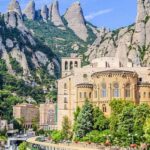 Discover the Architectural Beauty of Montserrat Monastery Basilica in Barcelona
Discover the Architectural Beauty of Montserrat Monastery Basilica in Barcelona Exploring the Heavenly Montserrat Monastery in Bogota
Exploring the Heavenly Montserrat Monastery in Bogota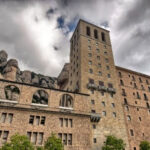 The Fascinating History of Montserrat Monastery: Unraveling its Mysteries and Legends
The Fascinating History of Montserrat Monastery: Unraveling its Mysteries and LegendsIf you want to know other articles similar to The History of Montserrat Monastery in Barcelona: A Sacred Journey you can visit the category WHERE YOU CAN GO.
Deja una respuesta

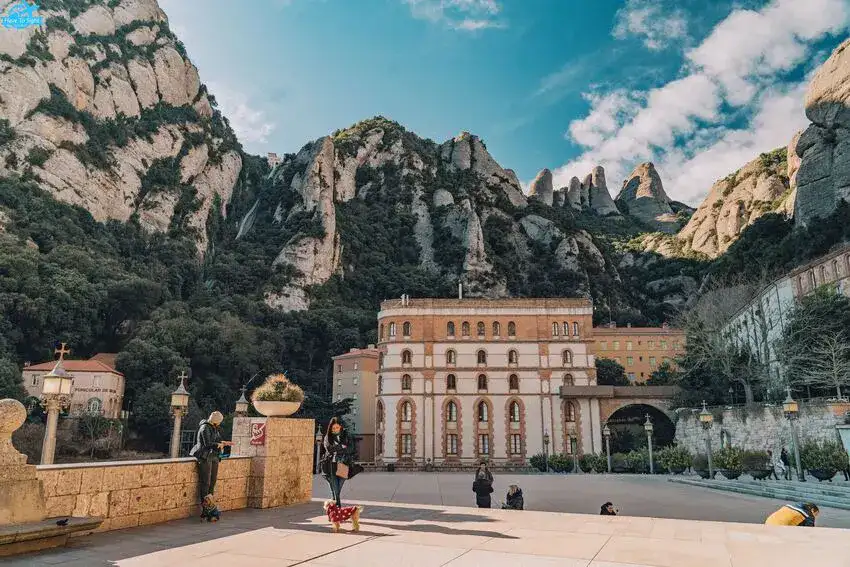
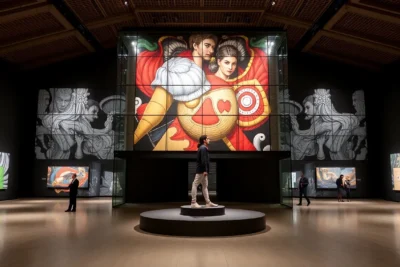
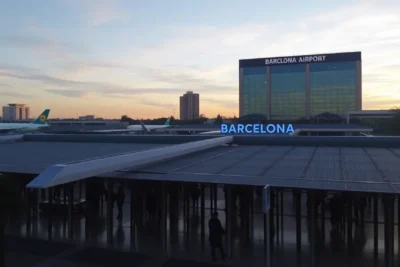
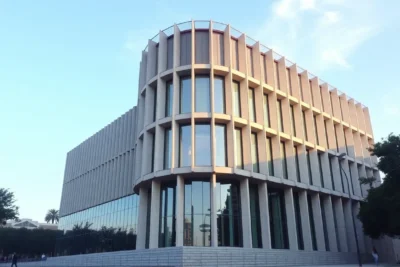
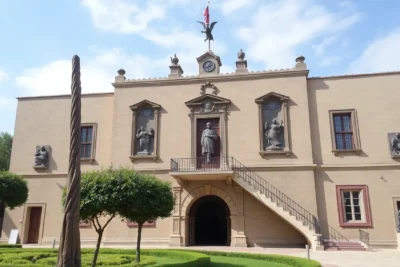
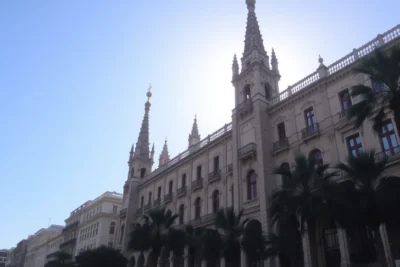

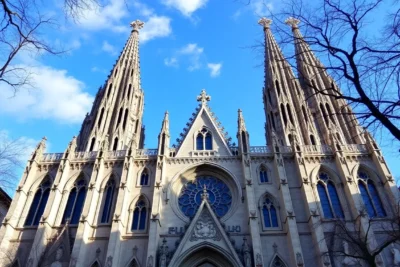
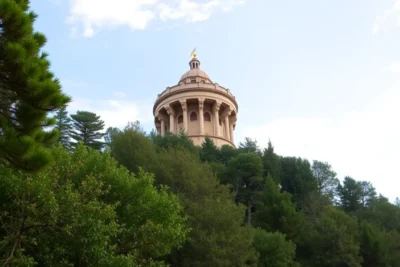
Read more!